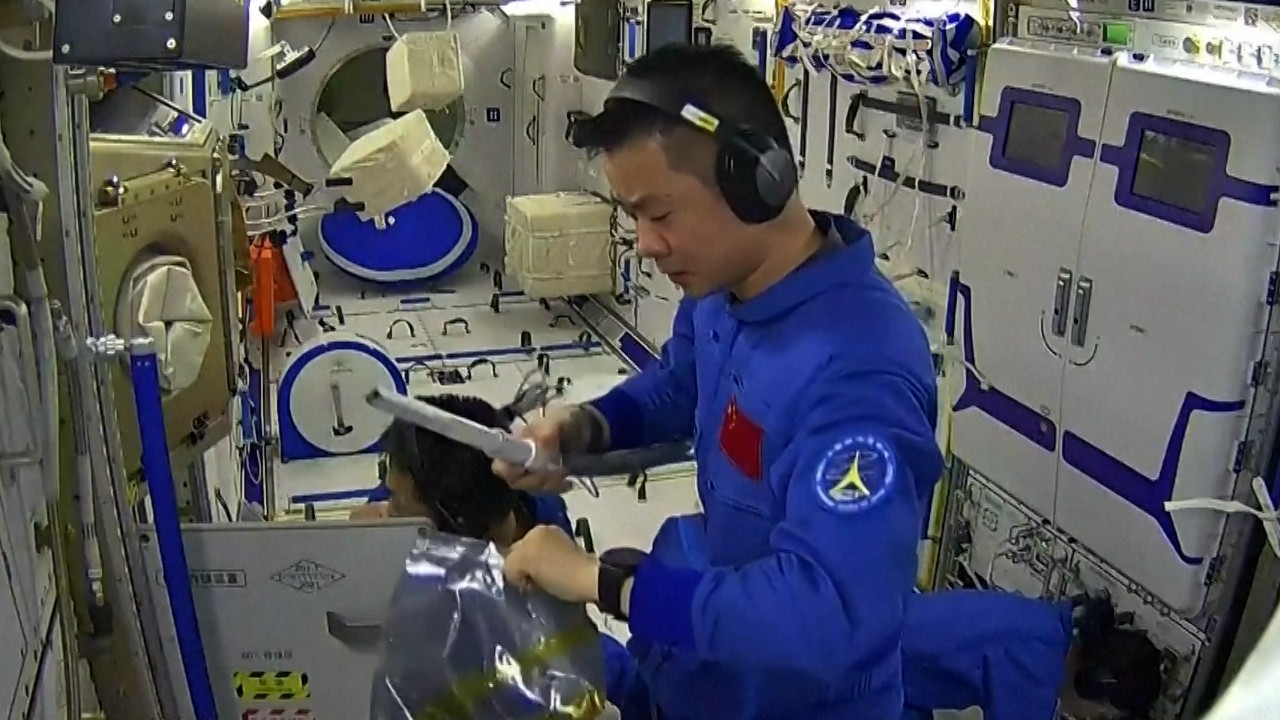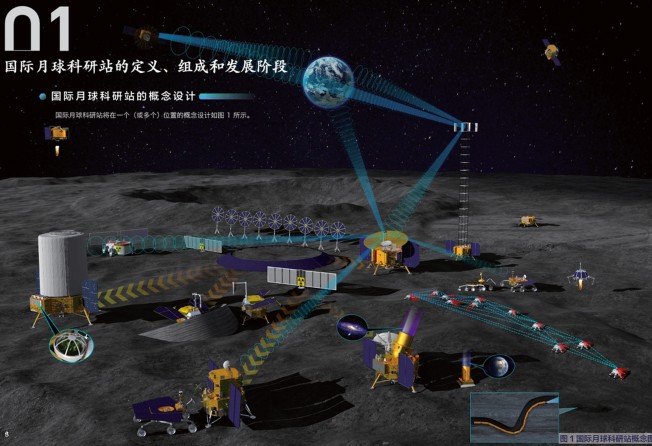
01:25
China grows rice, other plants in space as part of Tiangong station experiment

China’s station at the moon’s south pole will be powered by nuclear energy, the chief of the lunar project said.
“We are now developing a new system that uses nuclear energy to address the moon station’s long-term, high-power energy demands,” Wu Weiren, chief designer of the Chinese lunar exploration programme, told state broadcaster CCTV on Monday.
He did not give technical details about the nuclear reactor being built, but previous reports said it could generate 1 megawatt of electricity, which is enough to power hundreds of homes for a year.
Nuclear energy is a continuous and reliable source of power regardless of location or available sunlight. It will provide the energy needed for instruments to operate and for astronauts to generate oxygen and extract water, among others.
China’s moon station is expected to be complete by 2028. Its basic configuration will comprise a lander, a hopper and an orbiter as well as a rover that will be charged with nuclear energy.
Wu said the rover could be ridden by the astronauts and would be much bigger than the two China operated on the moon, including the solar-powered Yutu-2 still rolling on the far side after nearly four years.
He said nuclear energy could also power the hopper, a device designed to “take off from the lunar surface many times” and hop in and out of a crater’s permanently shadowed area to look for water.
Nuclear energy will support the station’s communications facilities, to remain in contact with the Earth as well as relay signals between Earth, Mars and beyond for deep space missions.
Wu said the basic configuration would be constructed by the Chang’e 6, 7 and 8 missions. Soon after that, Chinese astronauts would set foot on the moon for the first time.
The station will then be expanded into an international scientific research station and astronauts from China, Russia and other potential partner countries will work there from time to time. But for most of the time the station will remain unmanned.
The moon’s southern polar region has become a popular target for lunar bases. Countries including China, the United States and Russia are considering building their space outposts there.
“China was the first country to propose building such a research station at the lunar south pole,” Wu said. At a latitude of about 89 degrees south, there could be 180 consecutive days of light to sustain long operations for both instruments and astronauts, he said.
China is still working to develop its Chang’e 6, 7 and 8 spacecraft. They belong to the fourth phase of the country’s lunar exploration programme.
In the past 15 years, China has deployed five successful missions – Chang’e 1 to 5 – to orbit, touch down on and return rock samples from the moon, including landing a spacecraft on the far side of the moon for the first time in history.
China will focus on four aspects of deep space exploration in the next 10 to 15 years, Wu said. Besides the moon base, China would also conduct asteroid detection and impact, planetary exploration and the development of heavy-duty launch vehicles.
“We need to increase the thrust power of our rockets by at least four times to support manned landings on the moon, Mars and mass transport between the ground and near-Earth space,” he said.